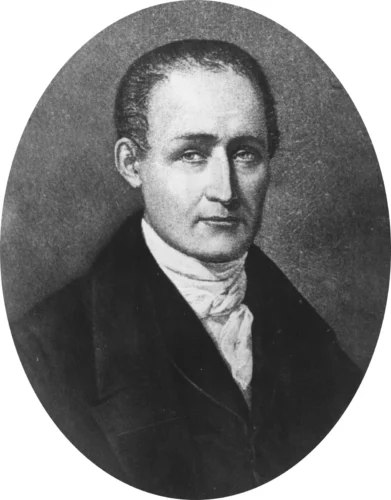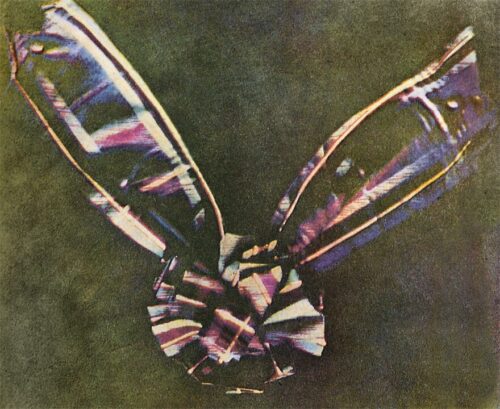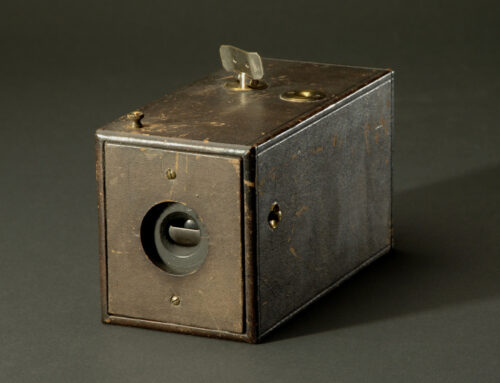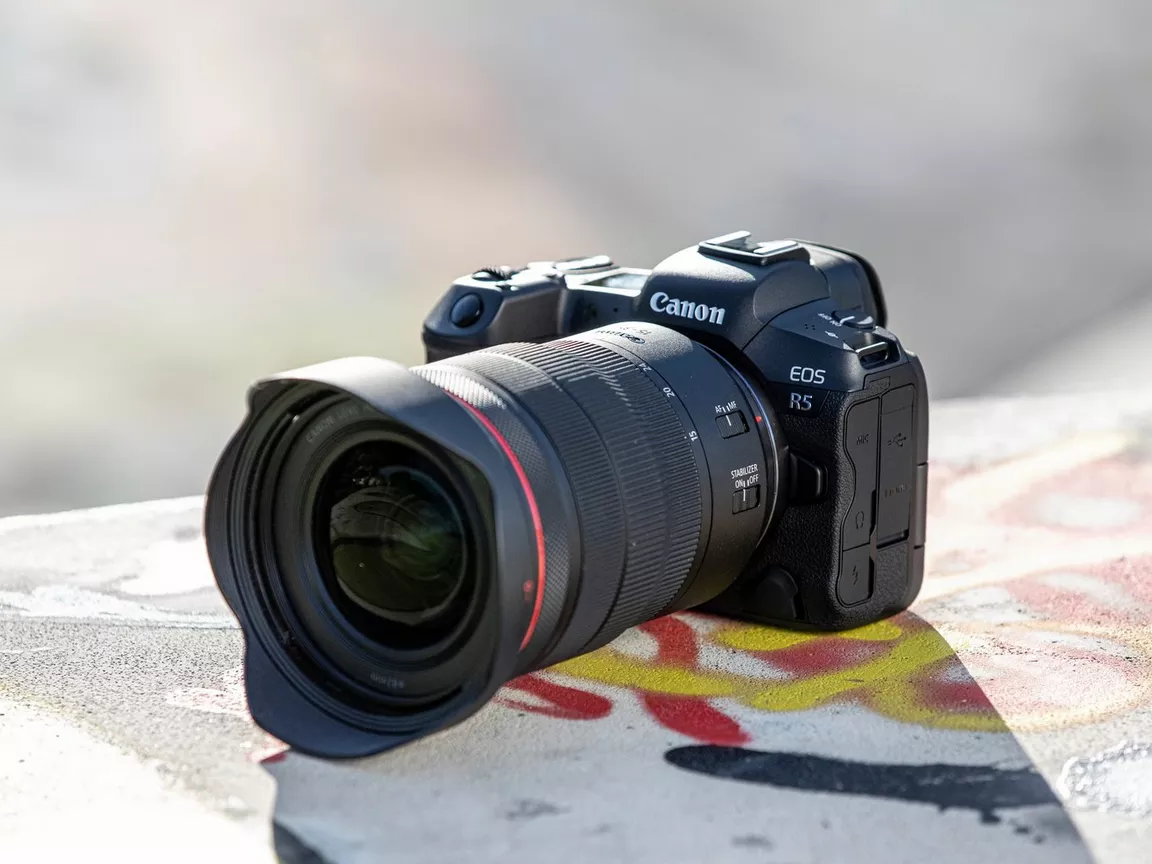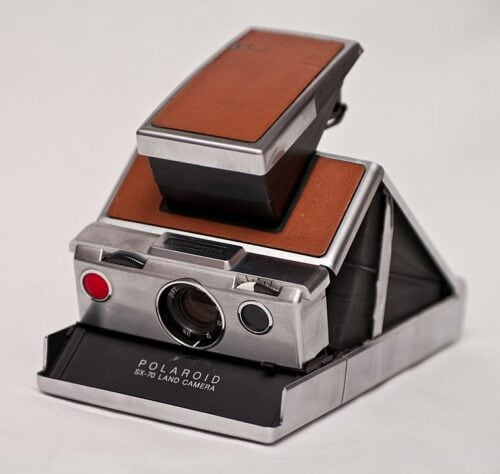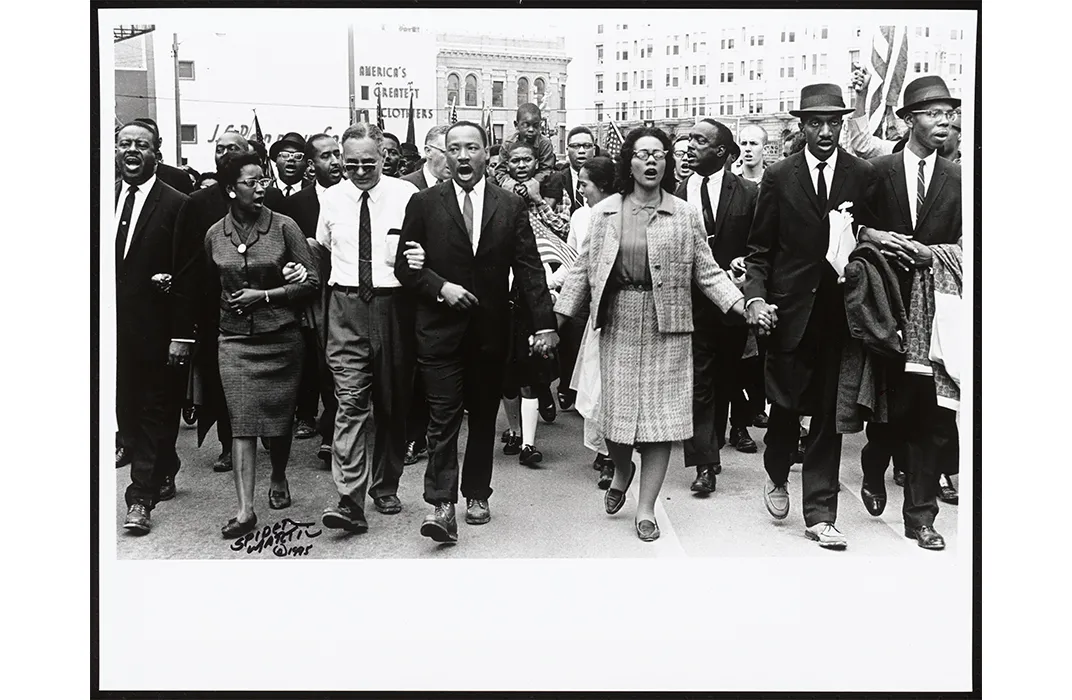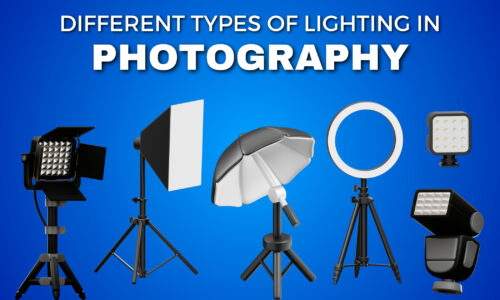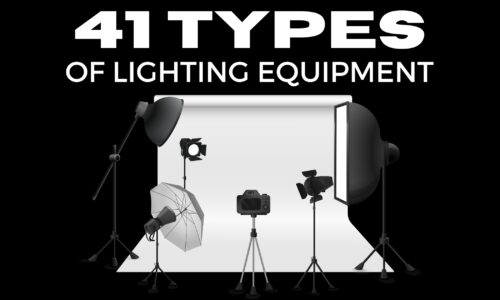The History of Photography (Timeline Included)
Millions across the world love and use photography every day. But, the history of photography and how we got here doesn’t get enough attention.
Before the invention of photography, art was the primary way you’d document and capture memories forever.
But, with the evolution of photography, digital cameras, and pictures, we can now capture and document anything we want in an instant.
So I wanted to take some time to explore the history of photography and how photography has become such a huge part of our world today in this article.
I’ll go over the history of photography and a timeline of major events.
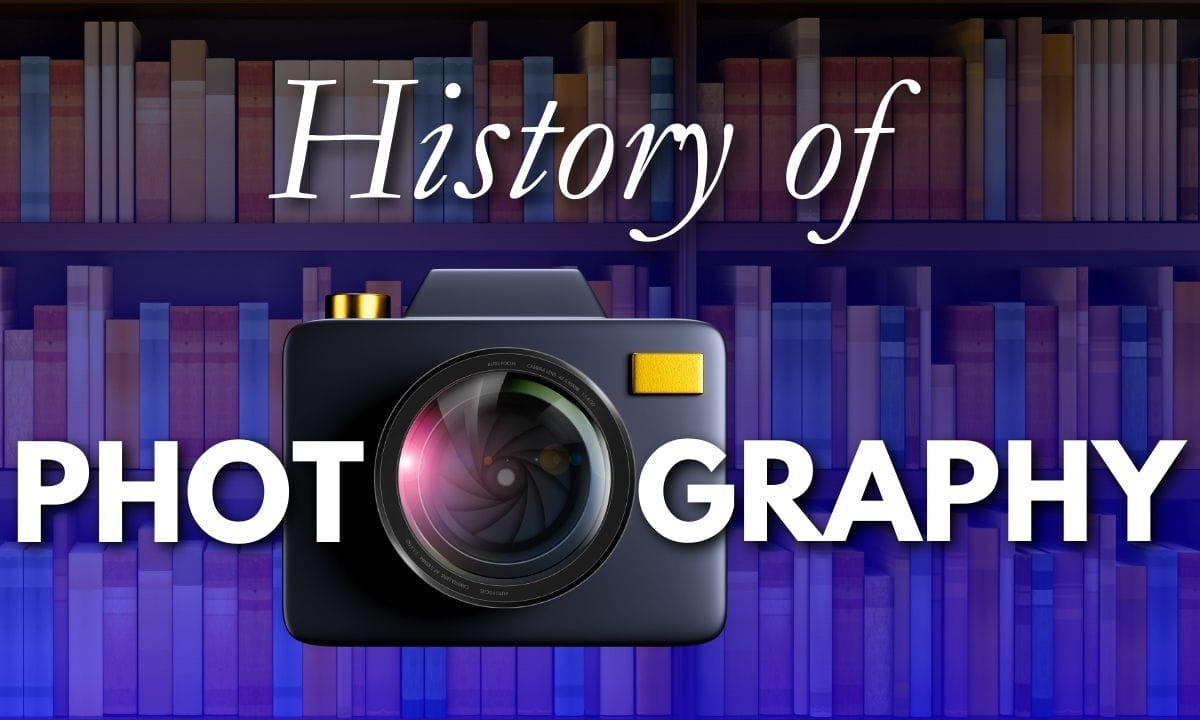
The Earliest History of Photography
The history of photography dates back much further than we realize.
Aristotle, in the 4th Century BC, discussed the principles of Camera Obscura.
A technique that involves projecting an image through a small hole. And when viewed through the pinhole, the image appears reversed or upside-down.
But even though Camera Obscura may have been great for projecting images, capturing images permanently wasn’t possible yet.
Camera Obscura is the foundation upon which all subsequent advancements, and innovations in photography have been built.
It shapes our understanding and the timeline of photographic image history.
When Was Photography Invented and What’s The First Photograph Ever Taken?
Joseph Nicéphore Niépce took the first photograph in 1826.
Prior to the 18th century, there is a lack of evidence suggesting any efforts were made to capture images using light-sensitive materials.
Nicéphore Niépce captured the first photograph, “View from the Window at Le Gras,” using camera obscura and a bitumen-coated pewter plate.
It took at least eight hours or several days of exposure time to create the first photograph.
Niépce used Bitumen of Judea (a type of Syrian asphalt) hardening by light exposure onto a glass or metal surface to create the image.
Fun Fact: The word “photography” was first used by the scientist Sir John Herschel in 1839. It comes from two Greek words: photo, meaning “light”, and graphos, meaning “drawing or writing”.
The Origins of Photographic Techniques
Now let’s go over the origins of different photographic techniques.
1. The Camera Obscura
The Camera Obscura which we’ve already touched on is a Latin term for “dark room.” It played a major role in the invention of photography techniques.
The Camera Obscura device is composed of a box or room that uses a small aperture on one side.
As light penetrates through the opening and reaches the surface opposite to the hole, it creates an upside-down representation of the scene. This preserves both the colors and perspective from the original view.
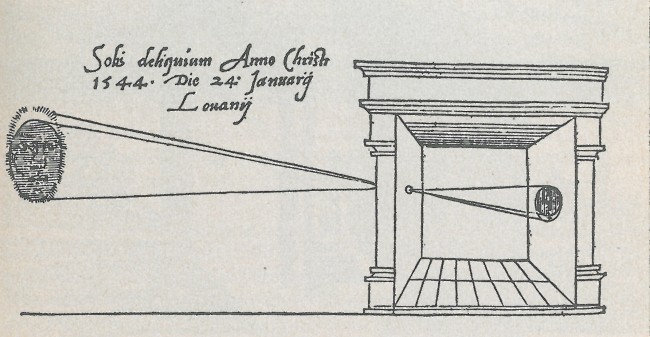
More on How Camera Obscura Works:
By the 16th century, technical upgrades turned this room into portable 17th-century tents or handheld boxes.
Artists commonly used the concept to outline realistic landscapes, essentially tracing light.
The box-like Camera Obscura inspired the creation of the earliest photographic cameras.
2. Daguerreotypes
Daguerreotypes are early photographs created by Louis Daguerre in 1839.
Daguerre was a fellow inventor with an interest in Niépce’s work and had a desire to develop better photographic processes.
Daguerreotypes offered a unique, detailed portrayal and quickly rose in popularity.
They made photographic portraiture accessible to more than just the wealthy. This transformed the art of capturing likenesses.
Here’s a summary of the photographic process:
A copper plate was coated with silver and exposed to iodine vapor.
To form an image, the plate needs light exposure for up to 15 minutes.
They then exposed the plate to mercury vapors for the image to become visible.
The image was then permanently fixed with a sodium thiosulfate solution.
And the result was a one-of-a-kind, detailed, and silvery-looking photograph.
Louis Daguerre’s 1838 daguerreotype, famously known as “The Boulevard du Temple,” is widely acknowledged as the earliest photograph that features human subjects.
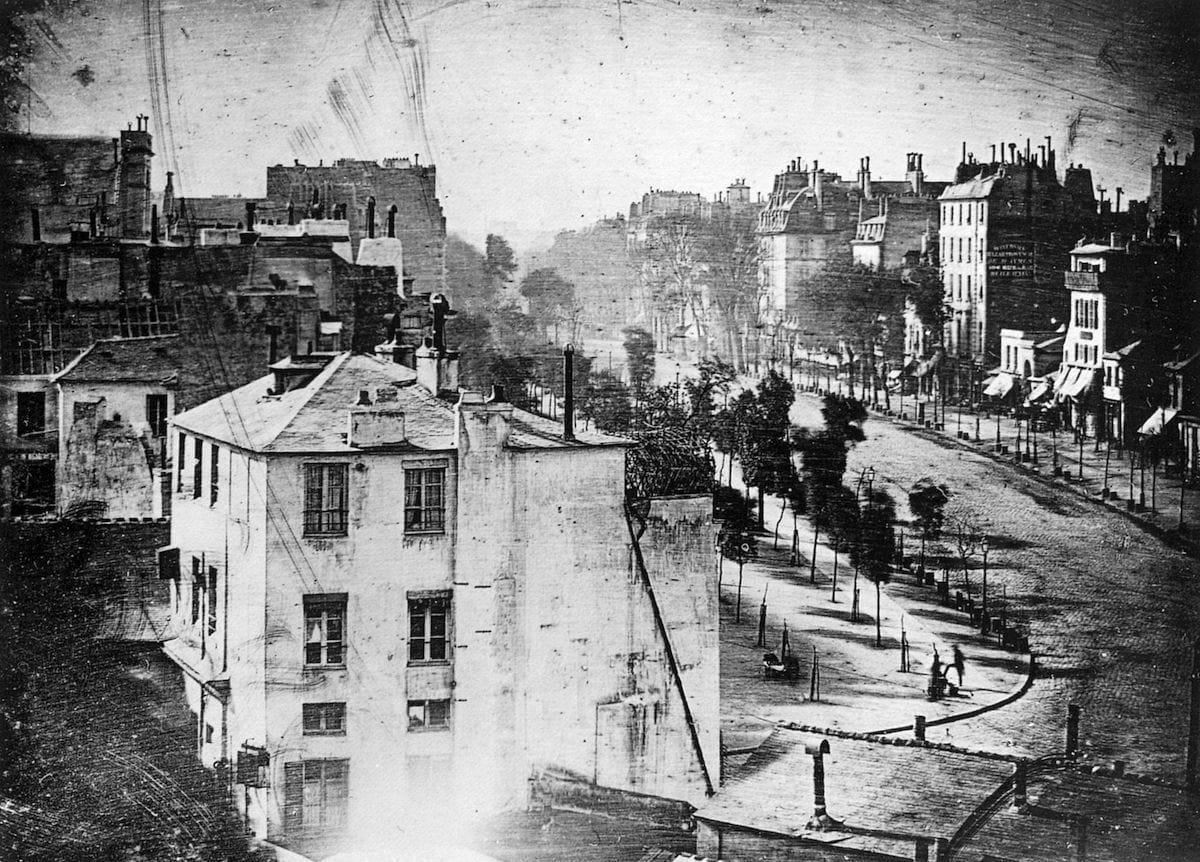
This remarkable image provides a glimpse of a busy street.
But because of the lengthy exposure time lasting several minutes, the movement of the passing traffic is completely unnoticeable.
3. Calotypes
Calotypes is another early photographic process developed in 1841.
Calotypes are known for their ability to produce many prints from one negative. But, despite a unique, artistic appeal, they had a few drawbacks. For example, a slightly blurry and grainy image, less ideal for sharp portraits.
Invented by William Henry Fox Talbot, this process involved exposing a sheet of silver iodide-coated paper to light to create a negative image.
And even with the limitations, calotypes paved the way for modern photography and continue to be appreciated for their distinct aesthetic.
4. Ambrotypes
James Ambrose Cutting patented the ambrotype process in 1854.
Ambrotypes are unique images created using a glass plate instead of the customary copper plate used in daguerreotypes.
Unlike daguerreotypes though, they aren’t reproducible.
Developed in the mid-19th century, ambrotypes were part of the wet plate or emulsion plate technologies.
Until 1880s, the glass negative process held its position as the prevailing method in the United States. The introduction of the gelatin dry plate process replaced it.
Many photographs from the American Civil War were created as ambrotypes and remain important historical documents today.
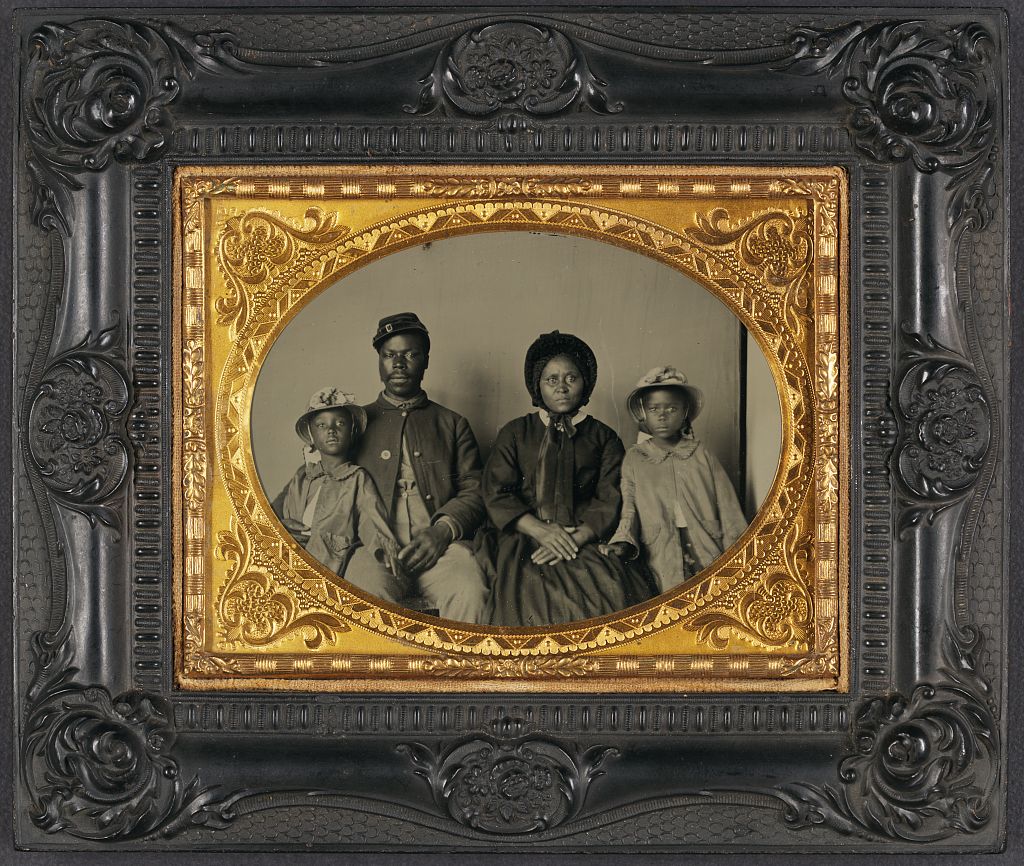
5. Cameras Lucidas
Camera Lucida is a device invented by William Hyde Wollaston in the 18th century.
It’s your early sketch tool and projected images onto a canvas for precise tracing.
Camera Lucida was also important to the development of art. It allowed artists to draw accurate representations of scenes and objects without having to rely on sketches or memory.
Today, Camera Lucida is still beloved by illustrators and artists who use it to create stunningly accurate works of art.
6. Photograms
Photograms are images made by placing objects on a photosensitive material, like photographic paper, and then exposing it to light.
The result?
A negative image displays varied shades of light and dark, depending on the transparency of the objects used.
For instance, if you use leaves and expose the paper to sunlight, you’ll end up with an image that precisely captures the texture and form of those leaves. Pretty cool, right?

7. Glass Plates
We have also used photographic glass plates for ages to create unique images.
The process involves coating a glass plate with light-sensitive silver salts and a viscous solution and then exposing it to light. Glass plates allow the same type of exposure as photographic paper, but they provide much sharper images with greater clarity and detail.
This makes them ideal for capturing intricate patterns, landscapes, or subtle details film can’t capture.
8. Color Photography
Color photography was a mere concept in the 19th century. But it quickly evolved to be commercially viable in the mid-20th century.
The first color photo? A tartan ribbon by James Clerk Maxwell in 1861. It produced the earliest known permanent color photograph.
In 1907, after over four decades, a functional color plate came to market.
This innovative product used filters to separate red, green, and blue light. All of which are the fundamental components of today’s digital photographic technology.
9. Film Cameras
Film cameras revolutionized the world of photography.
Photographers could take great pictures in any light and freeze motion effectively.
Their creation marked the beginning of a more portable and user-friendly era in photographic techniques.
George Eastman, the founder of the Kodak camera (Eastman Kodak Company), is credited with popularizing photography in 1888 when he introduced the first camera made for market distribution and film.
Eastman provided photographers with a compact and lightweight camera that was easy to use.
Roll film technology allowed film inclusion into the Kodak camera and other cameras and easy disassembly when the film needed to be developed.
His invention allowed photographers to capture life’s moments without the need for cumbersome equipment.
Film cameras are still widely used by many professionals and amateurs today, as they offer an artistic element that digital cameras cannot replicate.
10. The Digital Camera
The first digital camera was invented in 1975.
These cameras digitize photographs that have been converted into an electric signal—a significant shift from traditional analog photography.
Now, digital cameras are the most widely used cameras today.
They provide users with an enhanced user experience as they allow you to take pictures in a matter of seconds. Review your work immediately and make adjustments quickly.
And they’re packed with features like autofocus and image stabilization becoming standard.
Digital camera technology continues to evolve hand-in-hand with the smartphone industry, making photography accessible to everyone.
Join Our Newsletter
Each week you’ll get photography and business tips we don’t immediately publish online.
Major Milestones In The History of Photography
We’ve covered the origins of photography. Let’s go over some major photography milestones now.
First Permanent Images: Daguerreotype Was The First Permanent Image on a Metallic Surface
Prior to Louis Daguerre’s breakthrough, images couldn’t be made permanent; they faded away shortly after exposure.
But thanks to Louis, images could now be fixed onto a metal plate and won’t disappear. So, think of Daguerre’s innovation as the game-changer in the early photography scene, making permanent, tangible photos a reality for the first time.
So, why was this such a big deal?
Well, before the Daguerreotype process, capturing an image was tricky – and fleeting.
Photo enthusiasts had to prepare metal plates, expose them to light for hours, and then chemically process them. All for an image that would soon vanish.
But then came along Daguerre.
He recorded images on a copper sheet with silver plating. Then used iodine for treatment, silver chloride for development, and hot salt solution for fixing.
This cut down the required exposure time and gave us lasting images.
This breakthrough marked a key milestone in the history of photography. With Daguerreotypes, visual memories could now be captured and cherished.
By 1850, the process had become so popular that there were over 70 Daguerreotype studios operating in New York City alone.
It signaled the dawn of a new era in how we preserved our past.
The Kodak Brownie Camera: First Mass-Marketed, Affordable Camera
The Kodak Brownie Camera was one of the first cameras that made amateur photography accessible.
It was simple enough for you to use. Just press a button and boom! Kodak took care of the rest.
Below are some of its features:
It came preloaded with roll film enough for 100 shots.
Emblazoned with a single shutter speed and a fixed lens.
After the film was used, you would mail it back to Kodak for processing and reloading, which is where the slogan “You press the button, we do the rest” came from.
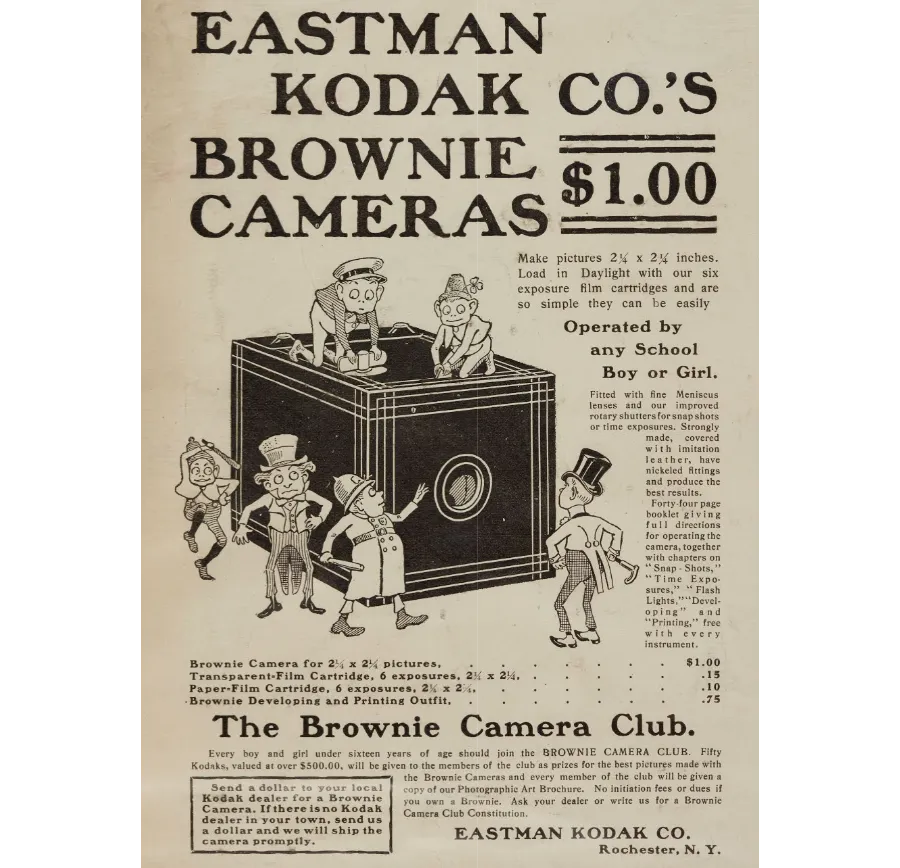
Autochrome Laminar Camera: The First Color Camera
The Lumière brothers created the first practical way to take color photos in the 1900s.
This process, an evolution of Louis Duclos du Haroun’s idea, used a mosaic of tiny color filters and allowed a single photograph to capture the three primary colors.
The revolutionary technique meant colors would merge in the eye, creating a single, full-color image.
Despite its significant exposure time and other limitations, its impact was monumental.
It marked a notable milestone in the evolution of photography because it gave us the ability to capture and share moments in full color.
Snapshot Photography: The Start of Consumer Photography – Polaroid Camera
Edwin Herbert Land, with his extraordinary inventiveness, gifted us the first Polaroid Camera in 1948.
The first Polaroid camera revolutionized photography. It was a breakthrough in photography, producing quick images through fast development.
This was the first instant camera that let you capture and develop photos in under a minute!
Snapshot photography kick-started consumer photography. Think of it as the great-grandparent of your selfie phone pics.
And early portable cameras allowed everyday people to take “snapshots”–unplanned pictures in everyday situations.
It was a revolution, moving photography from professional studios to the hands of regular people.
Why Photography Matters
Photography matters because it’s simply amazing!
You can capture your favorite memories of life on image and reflect on them whenever you like.
And photographs don’t just record our lives; it helps us make sense of the world – and tells stories, one snapshot at a time.
Photography is so much more than just a timeless memory. It’s an art form that speaks louder than words.
And with the right photographer, it can communicate powerful ideas and emotions. It can create powerful visual experiences that stick in our minds and hearts.
The Impact of Photography On Society
Photography has long been a powerful tool for communication and expression.
It influences how people think about the world, helping to shape our shared history and future.
And in recent years, it’s become a more important way of connecting with others. It gives us an opportunity to share perspectives and tell stories we might not have otherwise had the chance to.
Photography can also be a powerful tool for creating change, as it has been used to bring awareness to social issues and amplify marginalized voices.
It encourages us to consider different perspectives, sparks dialogue, and inspires action.
And by celebrating and embracing photography, we can create a better future for everyone.
Photographs Created a Change In How People View The World
Photographs have dramatically transformed our perception of the world.
The visual revolution, which began in the 1800s and advanced with digital technology, has refined our comprehension of human progress.
You’re now able to perceive the world beyond your immediate surrounding – whether it’s the realities of war or the peak of human achievement. The photographic services market globally is now worth USD 43.54 billion in 2023.
And not only has it redefined journalism, but it’s also a regular part of your day-to-day life. Just think of the last picture you saw today.
Photography Influences How People View Art
Before photography became its own art form, painting was the dominant medium in the art world.
When photography was first invented, it was a threat to the art world.
It scared painters. They believed photography would replace them because it could capture reality better than paintings. But photography really had the opposite effect.
It forced artists to rethink their approach to art. And it made them focus more on capturing emotion and atmosphere rather than focus on realism.
Photography also had a major impact on the way people view art history. Before photography, the only way to see art was to go to a museum or gallery. Photography made it possible for people to see art in books and magazines.
It also made it possible for artists to travel and document world history around them. This led to a new appreciation for photography as art in its own right.
And today, photography is an essential part of art.
It’s used by artists to create new and innovative works of modern art, and it’s also used by curators and historians to document and interpret art history.
Photography Forever Changed How We Communicate
Photography revolutionized communication. The camera on your smartphone is a testament to this.
Examples of how photography has changed how we communicate:
Photography is used to document history. It has helped us to record wars, famines, and other important events.
Used to tell stories, capture moments in time, events, express our emotions, and create a sense of belonging.
Photography is used to sell products. It’s used to create advertising campaigns and make products more appealing to consumers.
Photos are used to educate people. It can show you different cultures, explain scientific concepts, and promote change.
Before photography, the only way to share images was through paintings, drawings, or sculptures.
This was slow and expensive. It meant most people only saw images of faraway places or events through the eyes of artists.
Photography made it possible to capture images quickly and easily. And you can share them with a wider audience.
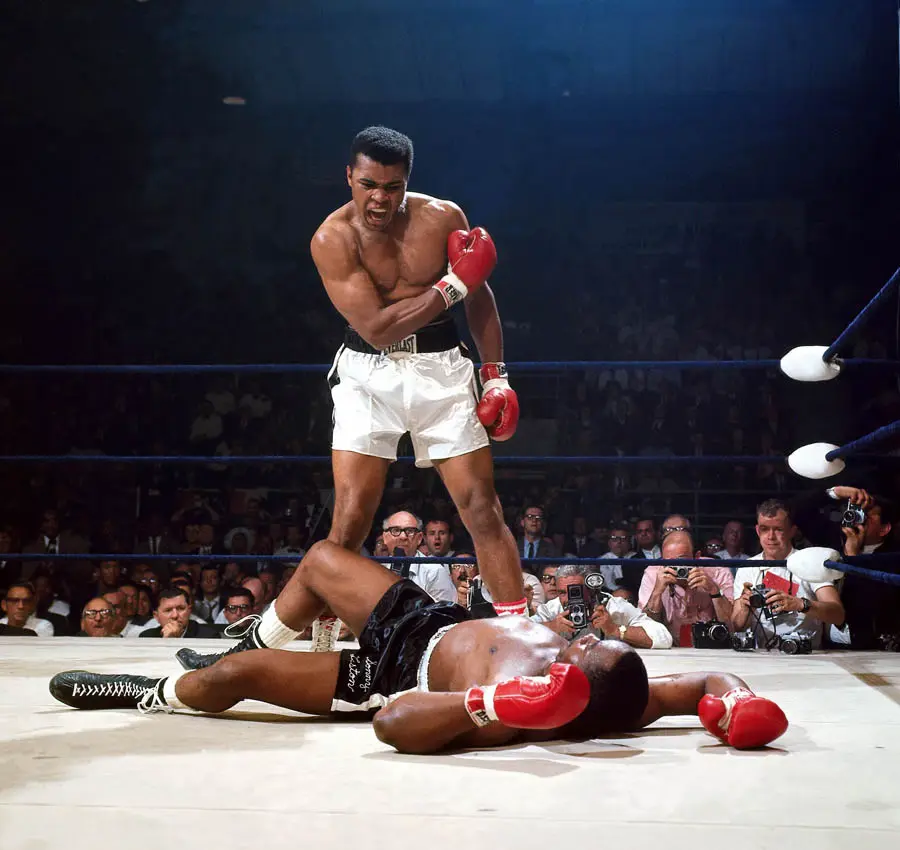
This had a big impact as we can now share images of our families and friends, events, of our travels, life experiences, and news and events of the day.
Photography has made the world a smaller place, and it’s given us a new way to connect with each other.
Photography Changed How We View Our Identities
Photography has forever changed our perception of self-identity.
Photography gave us the ability to see ourselves from a different perspective
Allowed us to document our lives and create a visual record of our identities
Gave us the power to control how we’re represented in the world
Made us more aware of the way we present ourselves to others
Changed the way we think about our digital identity and self-image
And whether you think this is good or bad, it has given us a new way to see ourselves and the universe.
Photography Changed How People Perceived Time
Imagine life before we could freeze moments forever with photography.
In the early days, photography not only changed how the news was communicated, but it also shaped our perception of time.
It allowed society to pause and study moments of reality. By recording events with precision, photography made time more tangible.
Photography turned fleeting moments into enduring images, transcending the limits of time.
This shift has changed how people think about and use time.
Photos Capture The Memories of Our Loved Ones
Think back to your last family gathering – you have dozens of photos that serve as a physical or digital reminder of the joy, laughter, and love experienced.
It’s through photography that we’ve gained the ability to freeze time, capturing smiles, gestures, and scenes precisely as they were.
And as memorable and impactful as these images are to us, they’re even more valuable to our loved ones. Photos of grandparents, aunts, uncles, and other family members connect us to previous generations.
Photography is a ticket back in time. It reconnects us with our most treasured memories. Ones that I think will otherwise fade away.
The Rise of Smartphone Cameras
Can you believe how much photography and having a camera in our smartphone has become a part of our lives?
From selfies and family portraits to school pictures and wedding photos, smartphones with cameras are all over the place!
They’re so ingrained in our modern culture that sometimes we forget having this technology is a fairly recent thing.
Samsung introduced the first smartphone with a built-in camera in 2000. Since then, the evolution of the smartphone has continued and smartphones vastly outsell digital cameras now.

According to recent data, over 1.46 billion smartphones were sold in 2022 compared to about 8 million digital cameras.
Smartphones are getting better and can do things that regular cameras can do.
Their ability to take pictures and videos fast makes them necessary tools in our daily routines.
The Future of Digital Photography Development
Photography is a fast-evolving field, and new digital technology continues to roll out all the time.
Here Are 5 Trends Currently Shaping The Future Of Photography:
AI-powered cameras: AI-powered cameras are becoming increasingly sophisticated, and they’re able to take stunning photos with no human input.
Virtual Reality and Augmented Reality: VR and AR are opening up new possibilities for photography, allowing photographers to create immersive and interactive experiences.
360-degree photography: 360-degree photography is becoming more popular, it allows viewers to experience a scene from all angles.
Computational photography: Computational photography is a field of research that uses computer algorithms to improve the quality of photos.
Sustainable photography: There is a growing movement towards sustainable photography, which uses practices that are less harmful to the environment.
More Advanced Digital Camera Hardware and Software
Camera technology is going to advance in astounding ways.
Here’s What Might Be On The Way:
Enhanced resolution, offering unimaginably sharp and crystal-clear images
Advanced AI integration, enabling smarter settings and automatic photo editing
Improved light sensitivity for excellent low-light photography
3D imaging capabilities, providing a whole new perspective
Revolutionary battery technology for extended shooting sessions
Expansion in mobile photography tech, transforming our smartphones into more robust photography devices
These are just a few of the trends shaping the future of photography.
Photography As a Social Media Marketing and Business Tool
Photography plays a huge role in today’s digital-first world, especially in social media and business.
Powerful visuals can help tell a story, engage audiences, and give businesses a chance to stand out in crowded digital landscapes.

5 Ways Photography Impacts Business:
Brand Awareness: High-quality images help create brand recognition. Images consistent with a brand’s personality help etch a lasting mental picture in consumers’ minds, making your business more memorable.
Product Photography: Bare-bones descriptions don’t cut it anymore. Detailed, high-resolution images make your products more appealing, providing a better understanding to customers about what they’re buying.
User-Generated Content: Social media platforms are flush with user-generated photos. This not only adds authenticity to your brand but also keeps your content fresh and relatable.
Social Media Engagement: Posts accompanied by eye-catching visuals have a higher engagement rate. They grab attention, encourage interaction, and are more likely to be shared, expanding your reach.
Event Coverage: Whether it’s a product launch, conference, or a community involvement event, photographs can document and highlight these moments, making them a successful part of your company’s narrative.
All of these powerful visuals can help tell a story, engage audiences, and give businesses a chance to stand out in crowded digital landscapes.
Because photography goes beyond capturing an image. It tells a story.
A Timeline History of Photography
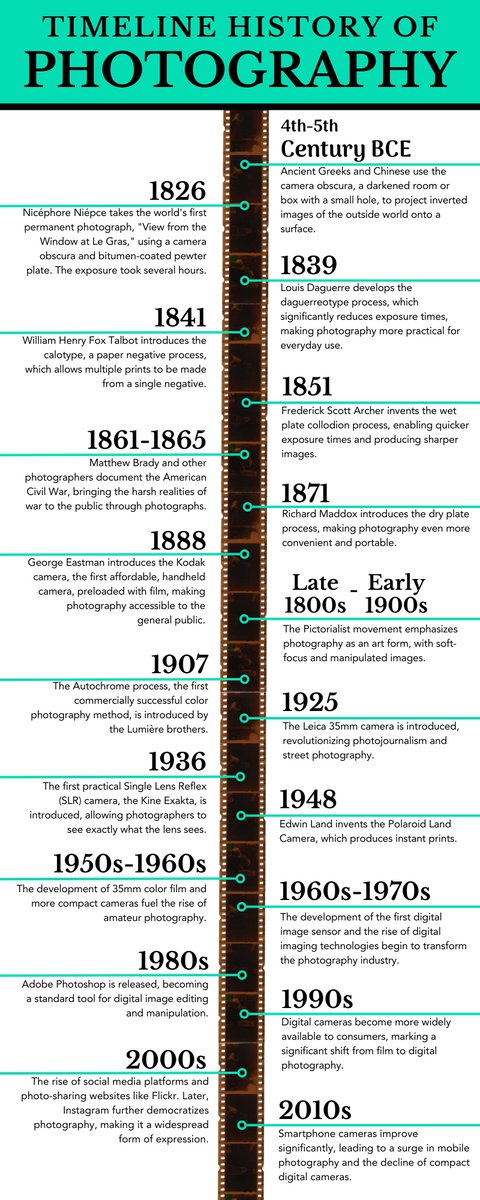
3 Resources YOU Can Use to Grow Your Business
1. Content Done Right: A done-for-you system you can follow to create high-quality content and social media posts each week.
2. Photography and Digital Marketing: We’ll take care of your photography, website, and marketing. So your brand, products, and services look great online.
3. Join 162+ Brands and Business Owners by subscribing to our newsletter. You’ll get the latest resources, guides, and actionable tips to grow and monetize your business.
